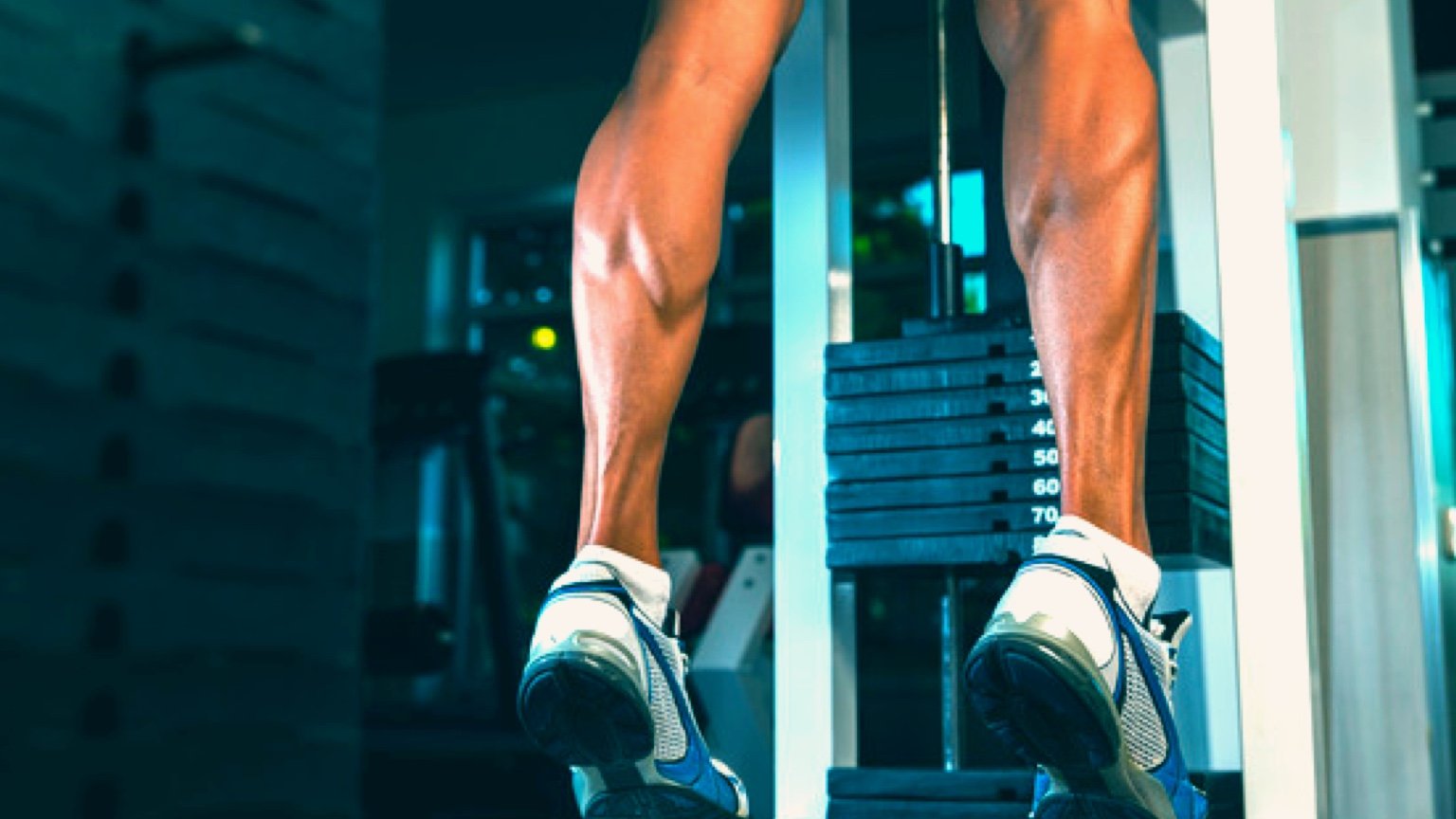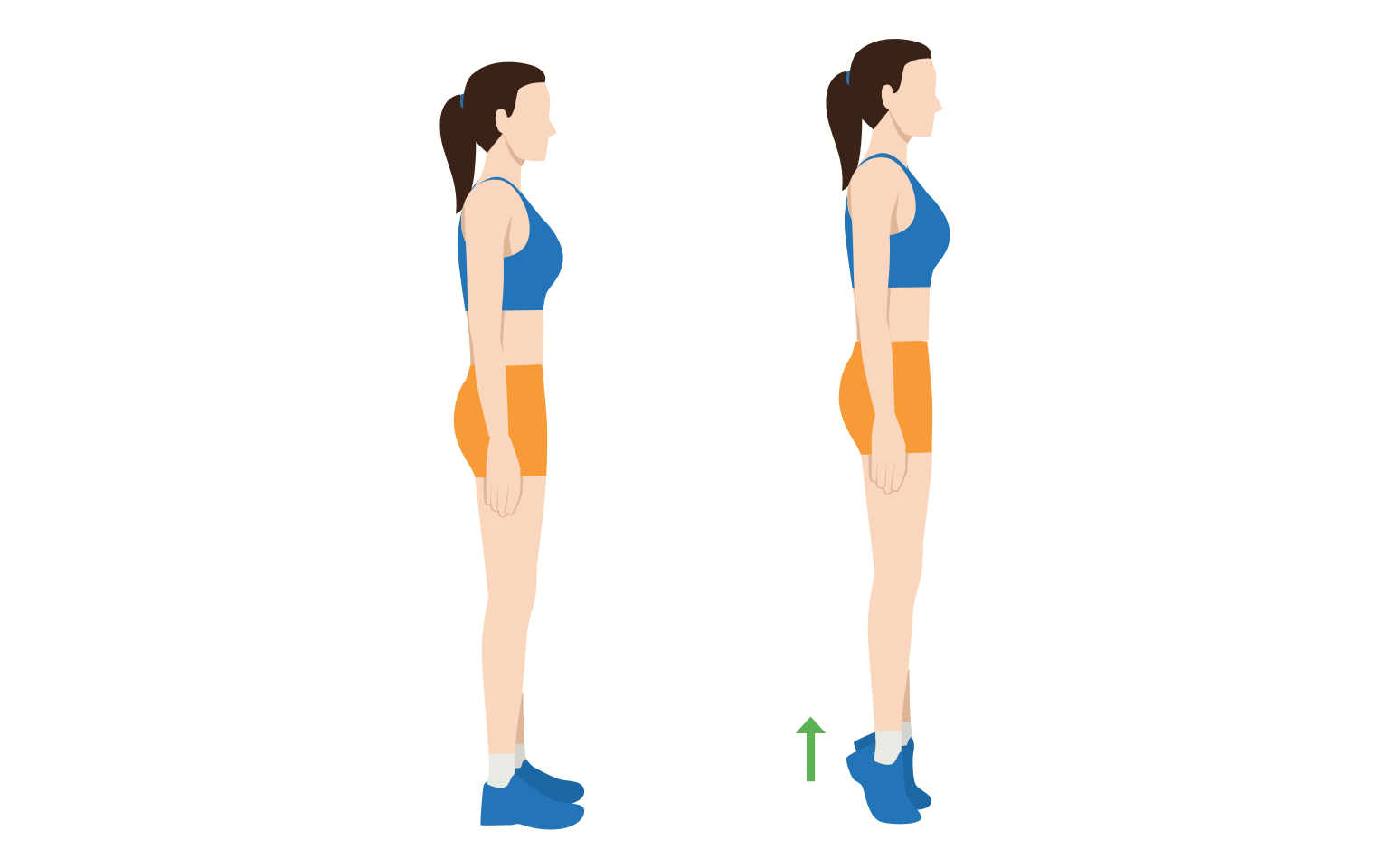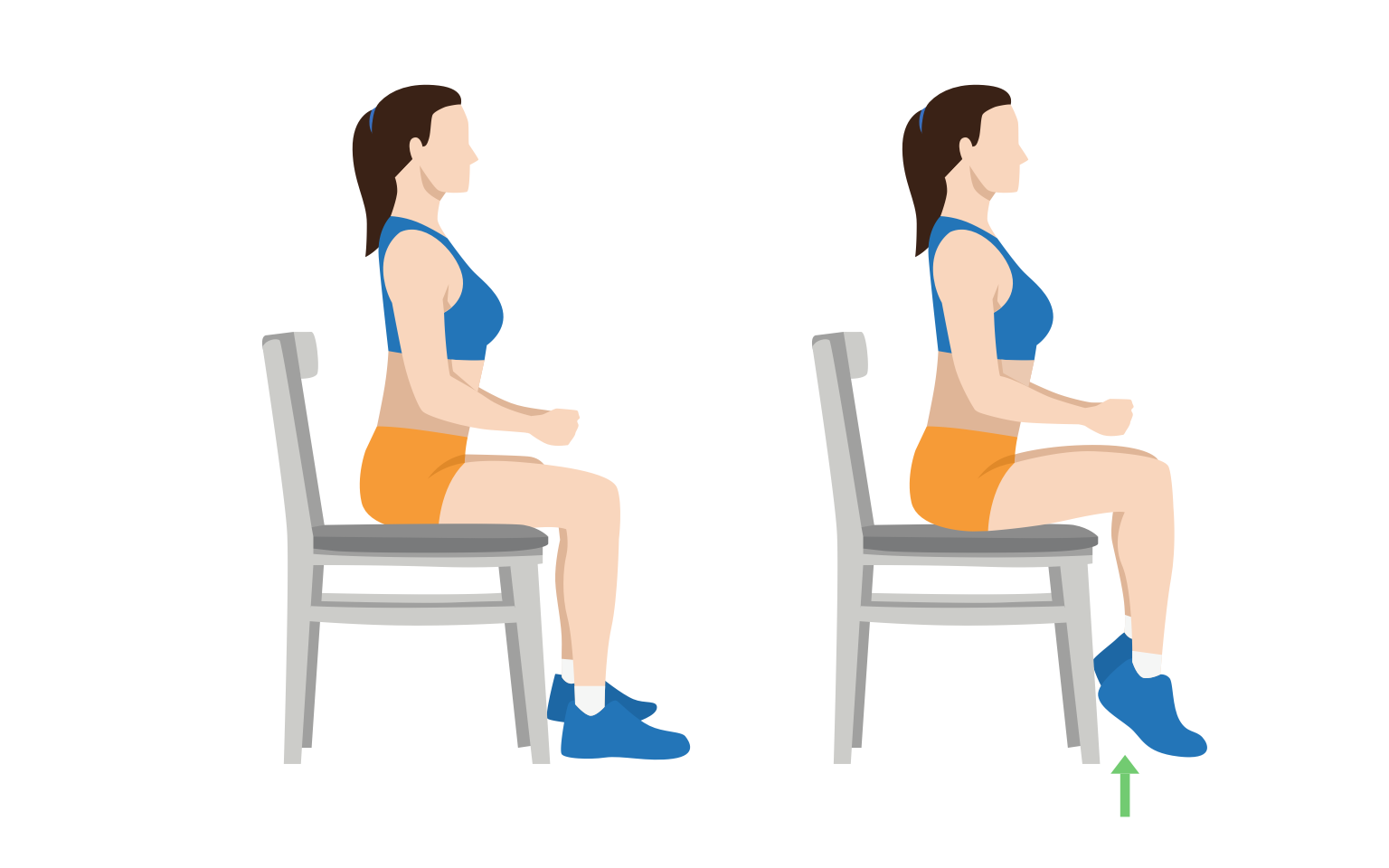
Calf raises are a simple but effective exercise that target the calf muscles in your lower legs. It is a great workout for everyone, including beginners, and because it doesn’t require any equipment, you can perform it literally anywhere!
This exercise strengthens your calf muscles, which benefits both athletic and everyday activities, including walking, running and jumping.
You can perform calf raises on any flat surface, but if you’re looking for an extra challenge, you can simply add weight by holding dumbbells while you perform the movement.
We recommend including calf raises as part of your regular workout routine, alongside other exercises that work the ankles and knees. Lunges, squats and step-ups are great exercises to work alongside calf raises in your routine.
You’re likely already doing squats and lunges as part of your regular workout routine. Performing calf raises after these exercises is a great way to maximize your lower body strength. This ensures your larger muscle groups, e.g. quads and glutes, are worked first, followed by your smaller calf muscles. This approach enhances the overall performance of your workouts, and boosts your balance and stability.
Calf muscle
Calf raises work your calf muscles, which are in turn made up of the gastrocnemius and soleus muscles. These muscles are essential in walking, running and jumping and provide balance and stability. When you take the tiptoe position, your calf muscles contract to pull up your heels (pointing your foot downwards, i.e. plantar flexion), shifting your bodyweight onto the ball of your foot.

Both the gastrocnemius and soleus are connected to your heel bone via the Achilles tendon. This tendon transfers the power of your calf muscle to flex about your ankle and move your foot downwards. Walking, running and jumping all involve your calf muscles contracting, which pulls on the Achilles tendon, pulling up your heel and pushing it off the ground.
The calf muscles and Achilles tendons help propel you forwards when you walk or run, and provides the power you need to jump.
Benefits of calf raises
Doing regular calf raises will improve the size and strength of your calves, as well as provide you extra power in jump movements. They can also improve the tone and definition of these muscles.
Because contracting the calf muscle pulls on the Achilles tendon, doing regular calf raises can engage the Achilles tendon and ensure it is strong and flexible, which will avoid common strain injuries in this part of the foot.
Calf raises also promote ankle stability. Performing them regularly can you help avoid common ankle injuries in other exercises, particularly in movements where you jump and land.
How to do a calf raise

- Stand up tall on a flat surface, with your feet hip-width apart. Point your toes forward and keep your shoulders back and down. Engage your core, and let your arms hang naturally to your sides.
- Perform calf raises according to the 2-1-2-1 rule. This is where you raise over 2 seconds, pause for 1 second at the top, then lower over 2 seconds and finally pause for a 1 second at the bottom of the movement. Push off and raise your heels, exhaling as you do so.
- Squeeze your calves at the top of the movement, then inhale as you lower back down to the starting position.
- Repeat for the desired number of reps.
Calf raise tips
If needed, use a wall or chair for balance.
Make sure you stretch after any workout that includes calf raises. This will help prevent muscle tension. To stretch, lean against a wall with one foot in front of the other. Keeping your back knee straight, press your heel into the floor until you feel the stretch in the back of your leg. Hold for 20 seconds then perform the same stretch in your other leg.
Sets and reps
The calf raise is an isolation exercise with a small range of motion, so higher reps are recommended so you can fully engage and work your calf muscles.
Start with 2 sets of 10-15 reps each.
If you are adding weight (dumbbells or barbell), aim for fewer reps to accommodate the increase in intensity. You might do 8-10 calf raises if you were using light dumbbells, for instance. Equally, if you are not using any weight, aim for more reps!
It’s a good idea to vary the weight and number of reps you do throughout your workout routine. You might do ‘heavy’ days where you increase the weight and reduce reps to 8-10 and ‘light’ days where you do 10-15 reps. This approach of exercising for strength and endurance can provide optimal development of your calf muscles.
Take a rest of 30-60 seconds between each set. This will give some time for your muscle to recover, and helps you maintain proper form throughout the exercise.
Common mistakes
The most common mistake in calf raises is performing the exercise too fast. This reduces the range of motion and makes the exercise less effective. Slow down your pace, and remember to follow the 2-1-2-1 rule.
Calf raise variations
Raised step calf raises
Rather than standing on a flat floor, the raised step calf raise sees you stand on the edge of a step or platform with your heels hanging off the edge.

Slowly lower your heels until you feel the stretch in your calves, then push up onto the balls of your feet to raise your body upwards. The raised step variation increases the range of motion and makes your muscles work harder, which can result in stronger and more toned calves. It’s also a great exercise for improving your balance.
Seated calf raises
The seated calf raise targets the soleus muscle, part of your calves, but does not work the gastrocnemius muscle so much. This is because of your bent knee position. Your hamstrings are not engaged through the movement, because they remain at rest when you are seated. So it is less effective than a traditional calf raise.

It is, however, a good choice if you have balance issues since sitting down provides extra stability through the exercise. It also reduces the risk of injury and falls, so it is particularly beneficial to seniors.
We recommend you stick with standing calf raises if you are able to do so. The standing calf raise engages more muscles, improves your overall balance and coordination, and mirrors everyday movements making it more useful in everyday life.
How to perform a seated calf raise
- Sit in a chair, maintaining a straight back, with your shoulders relaxed. Keep your feet flat on the floor, approximately hip width apart.
- Engage your core and perform the exercise. Push down onto the balls of both feet, lift your heels by contracting your calf muscles. Follow the same 2-1-2-1 rule as with standing calf raises.
Dumbbell calf raises
In a dumbbell calf raise, you simply hold a dumbbell in each hand and perform the calf raise as before. The extra weight of the dumbbells increase the intensity of the exercise, which stimulates more muscle growth and strength in your calf muscles.
You could also use a barbell by carrying it on your shoulders (like a weighted squat).
How to do a dumbbell calf raise
- Hold a dumbbell in each hands, with your arms hanging naturally by your sides.
- Stand with your feet shoulder-width apart.
- Rise onto your toes, lifting from your calves.
- Hold for 1 second, then slowly lower back to the starting position.
- Repeat for the desired number of reps.
